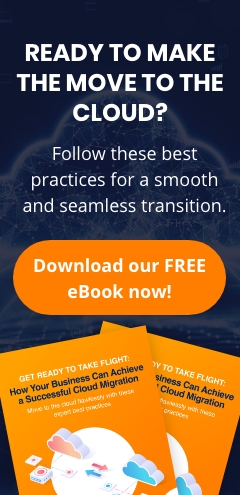Data loss events are costly for businesses. They’re also, unfortunately, common occurrences due to there being so many things that can compromise your servers and drives. The good news is that these data loss scenarios — along with the associated losses in revenue and productivity, not to mention compliance penalties — can be avoided by taking proper precautions.
Let’s look at some of the more common causes of data loss, some real-world examples, and how you can prevent your business from becoming another cautionary tale.
Human error
Despite the news focusing on sophisticated and devastating cyberattacks as the biggest threats to data, the hard truth is that most data loss incidents are caused by human error, usually on the part of an employee. Accidental deletions, misplaced hard drives, or even coffee spills can lead to lost or corrupted data. In 2008, a prison contractor in the United Kingdom got into hot water when they lost a data stick with the confidential information of 80,000 inmates.
Fortunately, these days, there are ways to prevent and mitigate this kind of carelessness. Cloud backups and data duplication tools ensure that not only are there always multiple copies of important data, but those copies are also stored securely off site. To prevent accidental deletions on the cloud server, you can adjust the settings of your cloud storage to delay complete deletions until after a set period of time, giving you a window of opportunity to restore lost files.
Theft
In the age of connectivity that we live in, it’s not unusual for the data found on a stolen laptop or smartphone to be more valuable than the device itself. Even if the device is secure with a passcode, given enough time, criminals can crack the security and make use of the data and login credentials stored on the device. And even if the device is not mined for data, you can face penalties from regulators if the data on the stolen device is sensitive, regardless of how it is used by the criminals.
Take for example a nursing home in Ireland that was fined because an employee left an unencrypted work laptop in their car, which was later stolen. No ransom demands, no scams, but fines from regulators all the same.
Besides implementing more stringent policies on device use, deploying mobile device management (MDM) solutions can help prevent the impact of device theft. An MDM system usually takes the form of an app installed on the device that allows you to encrypt or wipe data off a stolen or lost device.
Ransomware
Ransomware is popular among cybercriminals because they don’t need to go through the trouble of stealing and selling your data; they can just lock access to it or threaten to shred it if you don’t pay up. Businesses and other organizations have paid billions of dollars to cybercriminals due to attacks like GandCrab because the victims simply could not operate without their data.
The best defense against ransomware is employee training, as ransomware attacks are most often carried out through emails that trick recipients into clicking links or downloading malware. But human error is not going away, and some attacks can slip through the cracks, so redundant, encrypted data backups are still recommended. This way, if your data is locked down, you can just delete it along with the ransomware and carry on with your backups.
Software error and corruption
Humans aren’t perfect, but neither are machines, and they can make mistakes that cost you data as well. Poorly configured, out-of-date, or corrupted apps can easily cause the program to accidentally delete data or simply stop storing it like it’s supposed to.
Having experienced IT professionals regularly monitoring and updating your IT systems will go a long way toward preventing these kinds of errors and mitigating their damage by spotting them early. The longer your business technology goes without a “tune-up,” the more likely that you will experience a software-caused data loss event.
Partner with outsourceIT for expert IT services and data backup solutions to prevent these common scenarios from affecting your business. By investing in the right tools and strategies, you can protect your critical data and ensure business continuity even in the face of unforeseen events. Contact us today to get started!

